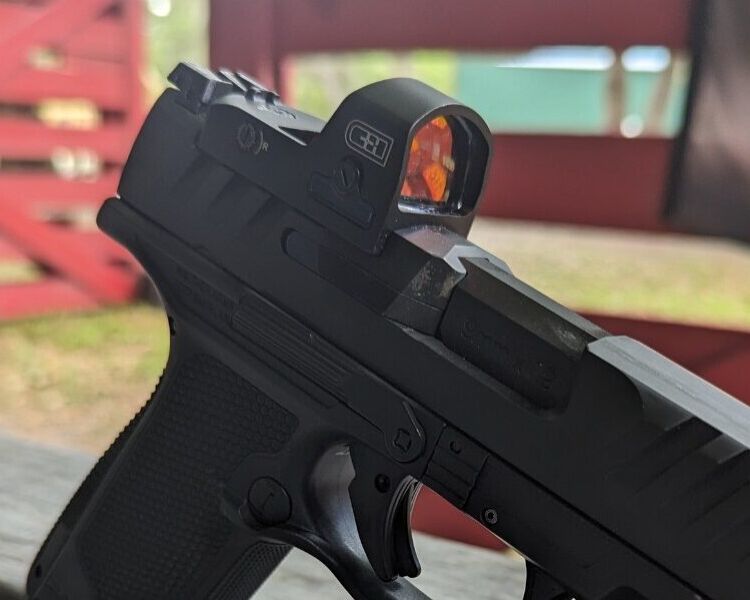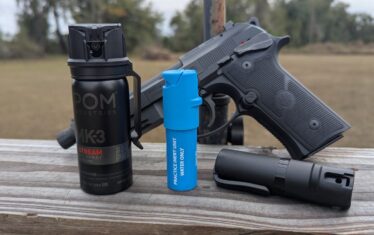C&H Precision specializes in red dot adapter plates, and they became well known for solving a problem faced by owners of the Glock MOS platform. The plates provided were fine but not great. Some were easily deformed when attached, and others were reportedly deformed from the factory — not to mention rusty plates.
C&H Precision solved the plate problem by producing precision-made replacement plates, but with the C&H Direct Mount Optic, they disregarded the need for plates.
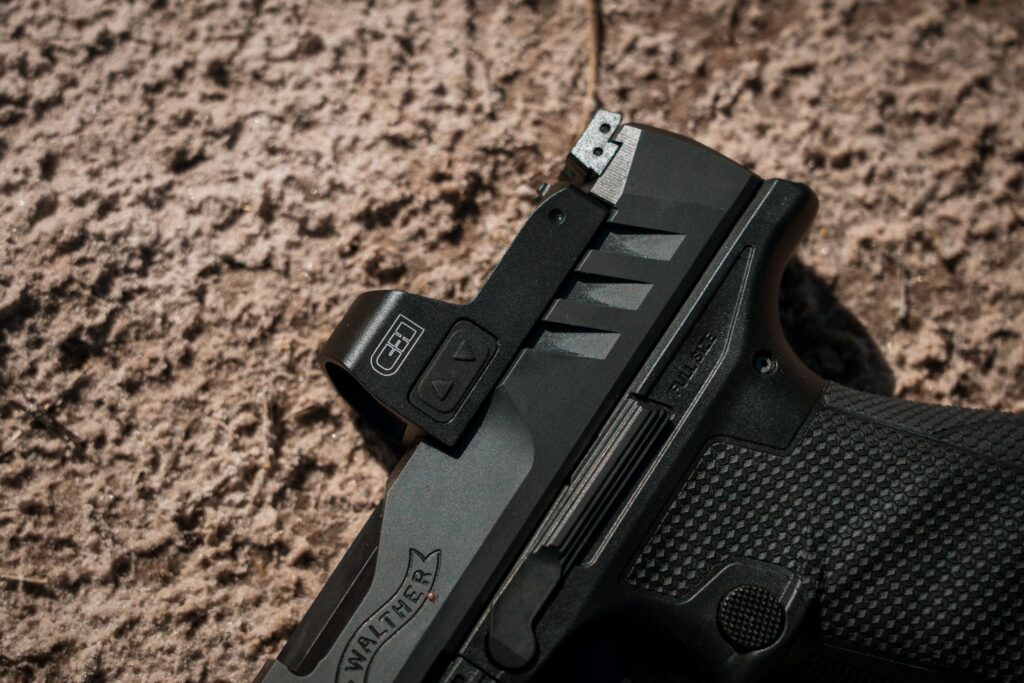
The C&H Direct Mount Optic is built in multiple configurations to accommodate various guns that use plates to mount optics. I wielded a Walther PDP Compact at a recent training event with a C&H Direct Mount Optic mounted to the slide.
I got a lot of time behind the gun and the optic in various situations. This included low light, bright days, and a mix of both. C&H Precision provided the Direct Mount Optic for the event, and I’m sad I didn’t get to bring one home.
Direct Mount Optic: Specs and Features
The Direct Mount Optic is an open emitter red dot sight that falls into the full-sized red dot category with its 24mm window. It is produced for these guns:
- Glock MOS
- Walther PDP
- HK series pistols
- SIG P320
- Taurus G3
- Smith & Wesson M&P 2.0
Outside of their mounting system, the optics are identical.
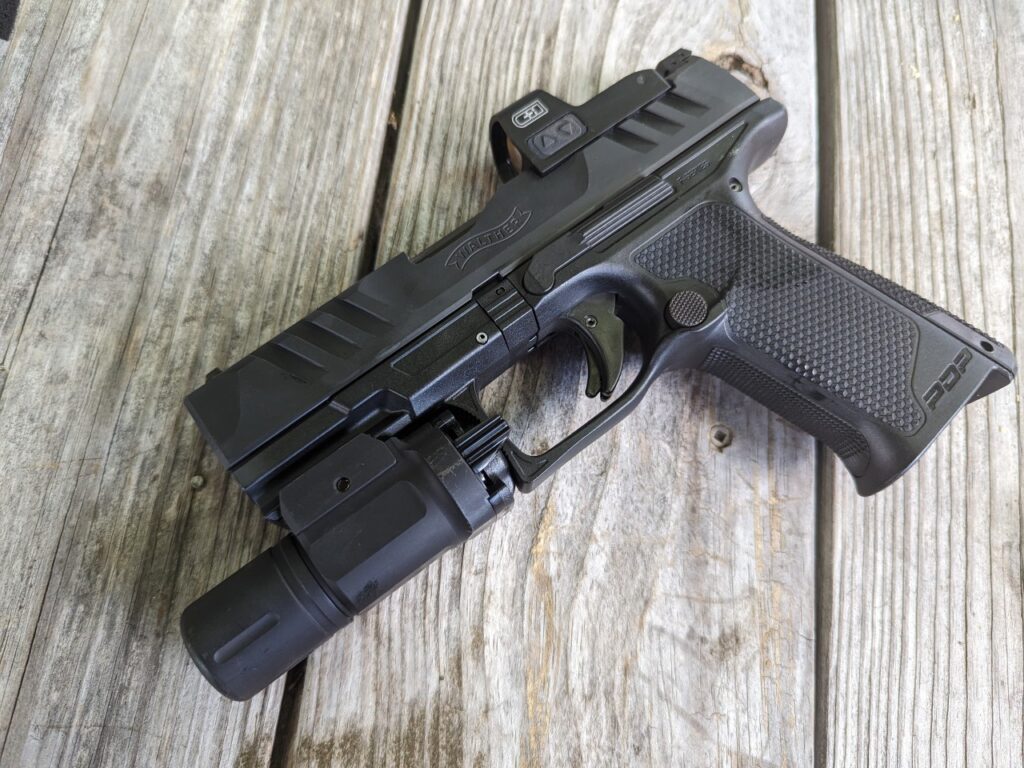
The Direct Mount optic offers 10 brightness settings, with the first two levels being compatible with night vision. The battery has a full 50,000 hours of life, so changing it won’t be a common occurrence.
C&H made some smart choices with these optics. They mounted the battery slot on the side so the optic doesn’t have to be removed to replace the battery.
Another smart idea comes from using a shake-awake style auto-on-and-off system. If the optic remains motionless for five minutes, it automatically shuts off. As soon as motion is sensed, the optic fires back up at its last setting. It’s smart and helps keep the battery lasting many years.
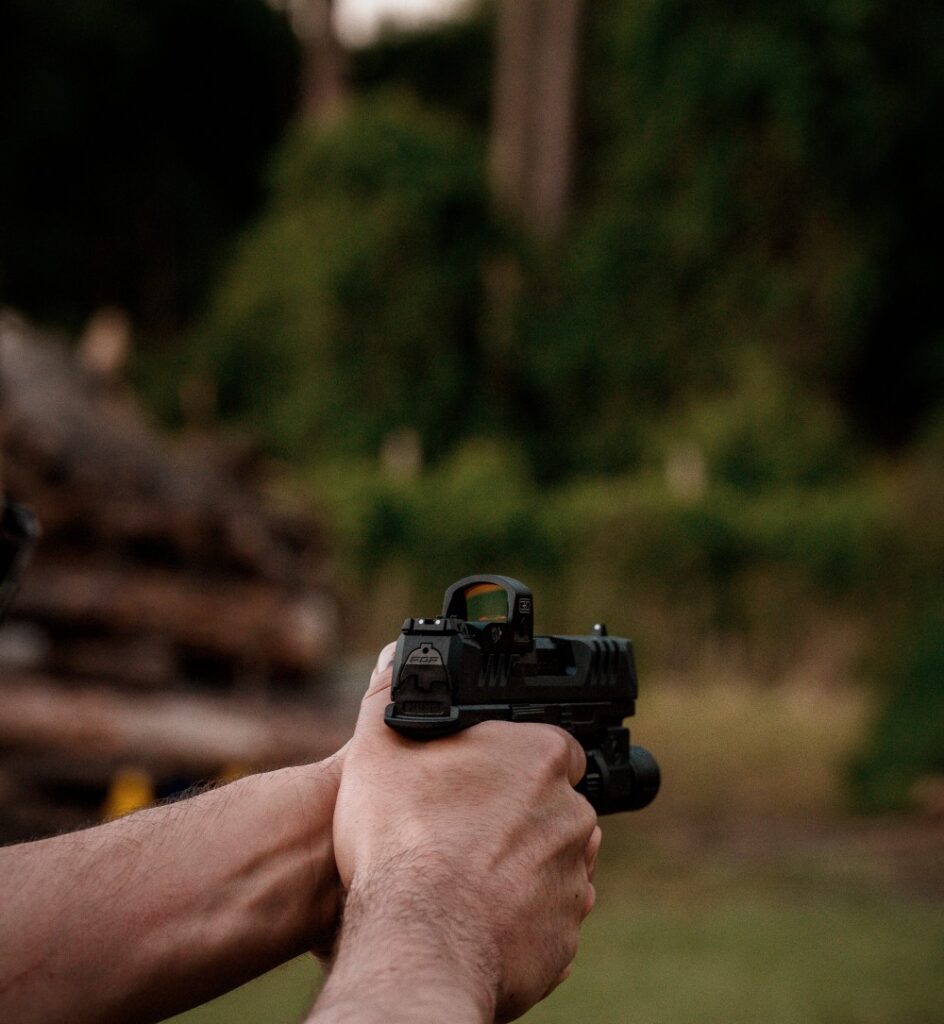
The Direct Optic Mount is both shock and waterproof. The optic can withstand the power of +P and +P+ ammo. You can submerge the optic in water up to 1 meter for 90 minutes.
Here’s some more good news: You don’t have to stick with one reticle. It has a nicely sized 3 MOA dot, or you can choose a 34 MOA circle with a dot in the center. I love options, and so should you.
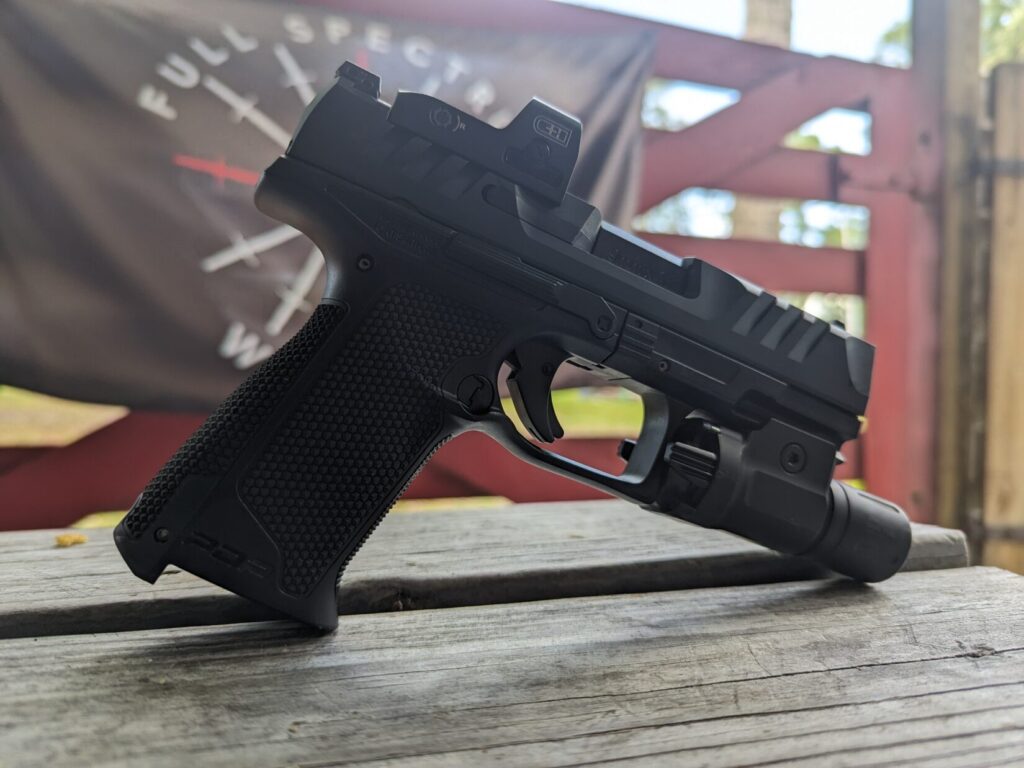
Mounting The Direct Mount Optic
Mounting took no time at all. We had the guns ready as a class in just a few minutes. Mix a couple of screws with the right degree or torque, and you’re ready to go.
One of the benefits of not using a plate and a direct mount system is that the optic sits lower. A nice surprise presented itself the first time I looked through the optic. The Direct Mount Optic sits low enough to co-witness with the iron sights of the PDP. I can’t confirm this will be true with every mix of gun and optic, but with the PDP, it works.
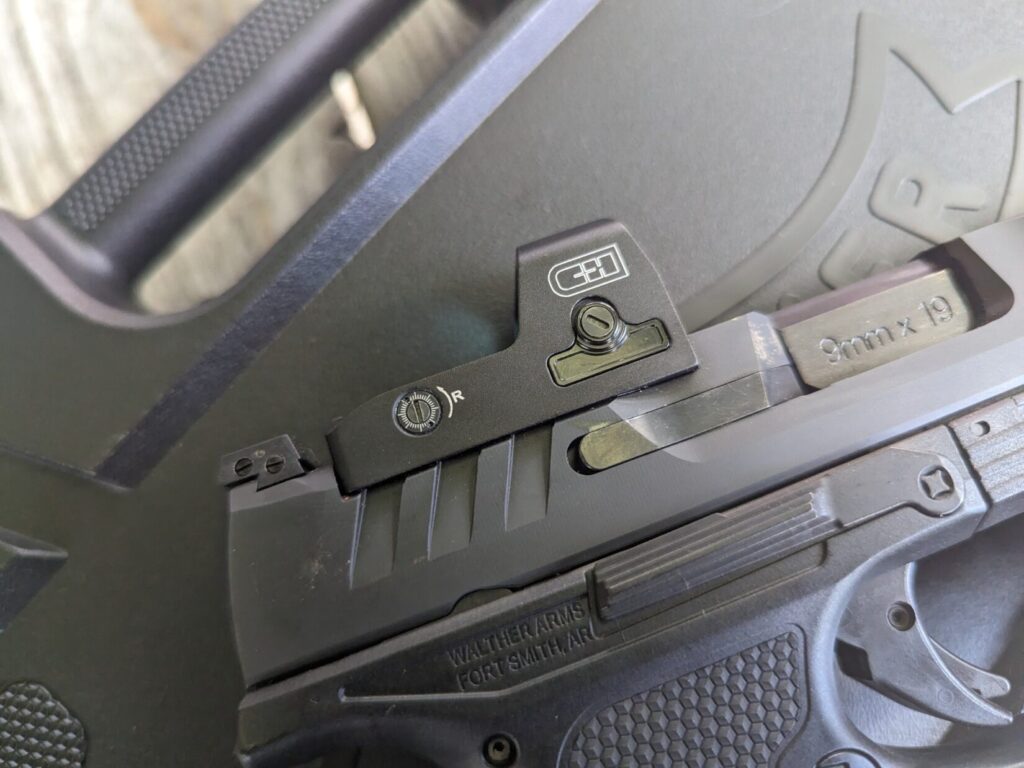
With the optic mounted, we did a quick zero at 25 yards. Loud clicks radiated as our class dialed in the optics. The clicks were more than audible and quite tactile. When you zero in with a dozen other shooters, you could lose track of clicks with gunfire in the air. Luckily, you can feel them.
With our optics zeroed, we had a little time to familiarize ourselves with optics and guns before we lept right into our night fire training.
When The Lights Go Out
A Modlite on each gun assisted us with the night shoot. It was a run-and-gun event made up of numerous stations. We were forced into various weird positions to shoot around, above, and through slots in barriers.
For the night shoot, I went with the 34 MOA reticle. I sacrificed precision for speed since the targets were nice and close, and we worked the lights on and off to engage.
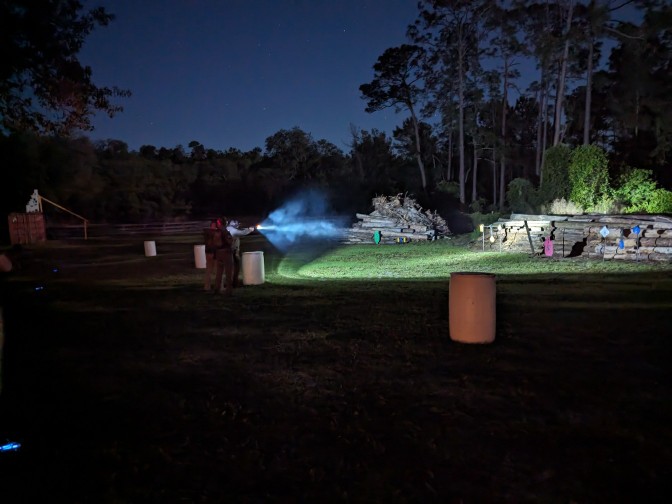
I got nothing but dings on small targets, dings on big targets, and dings on targets both near and far.
The reticle provided no problems when combined with the light and against the darkness. Even through movement, I didn’t detect the telltale stagger of a crappy refresh rate. The big 34 MOA reticle made it easy to track the red dot between shots and to keep spewing lead at a rapid rate.
Suns Out Guns Out
Gunfire from and around vehicles punctuated the next day. We worked inside and outside of vehicles and even combined live fire with vehicle movement.
We engaged from inside the vehicle for our first training event. In my haste to shoot, I completely forgot to adjust the reticle’s brightness from the night before. It was too bright to see the dot, so using the iron sights through the optic became incredibly important.

After that first exercise, I adjusted the dot and noted how tactile and responsive the buttons were. They responded instantly and were easy to find and use. The big rubberized design made them ergonomic.
The jump in brightness was readily visible. I moved to the 3 MOA dot during the day, especially when I noticed some smaller targets around the range.
As the day progressed, I got more time behind the Direct Mount Optic. The 3 MOA dot proved to be a winner for some longer-ranged shots. The less obstructed view made it easy to shoot targets who were ‘using’ the cover provided by vehicles assorted around the range.
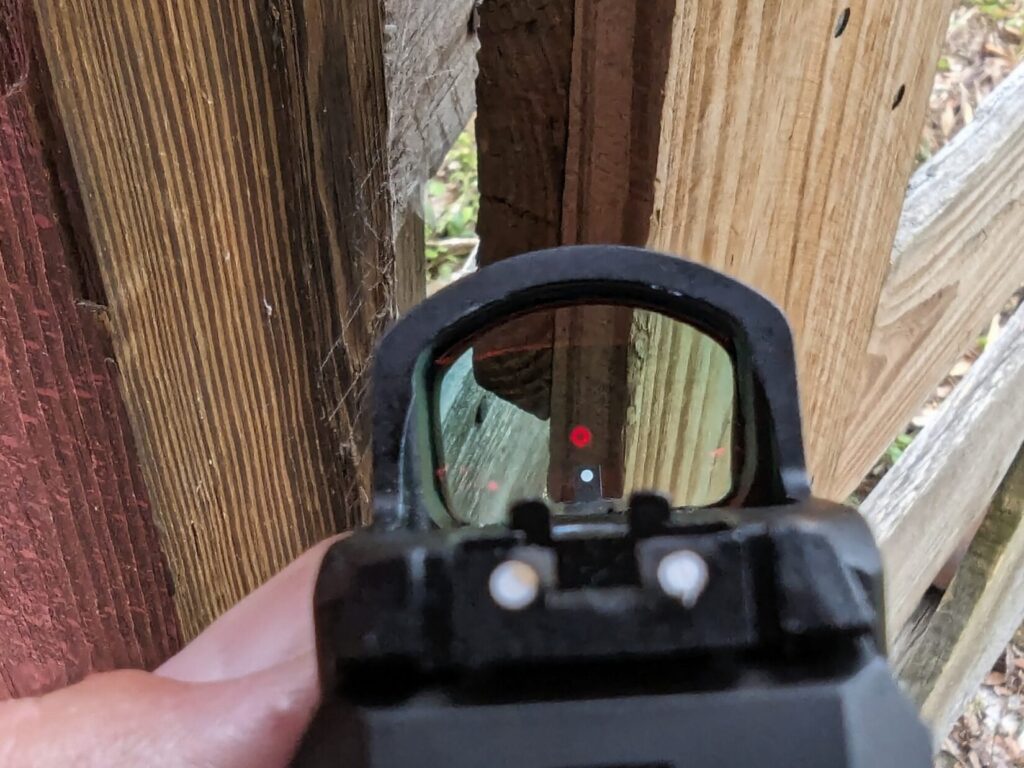
Our last event for the day after hours of vehicular training was a live fire obstacle course. This O-Course pressure tested both our guns and gear. Everything, including me, got banged up as we navigated the course. We shot a wide variety of targets, including targets at 25, 35, and 135 yards. Admittedly, scoring a shot at 135 yards with a handgun is tough regardless of the optic and I think I might have done it once in the 15 rounds.
A Simple Solution
C&H Precision has solved the problem of plates and universal optics mounts twice now. The Direct Mount Optic took the idea a step further and offered an even better solution. After two days of abuse, I have nothing but love for the Direct Mount Optic.
Check it out and send them some love. It fits perfectly in our 6354RDSO holster as well.





